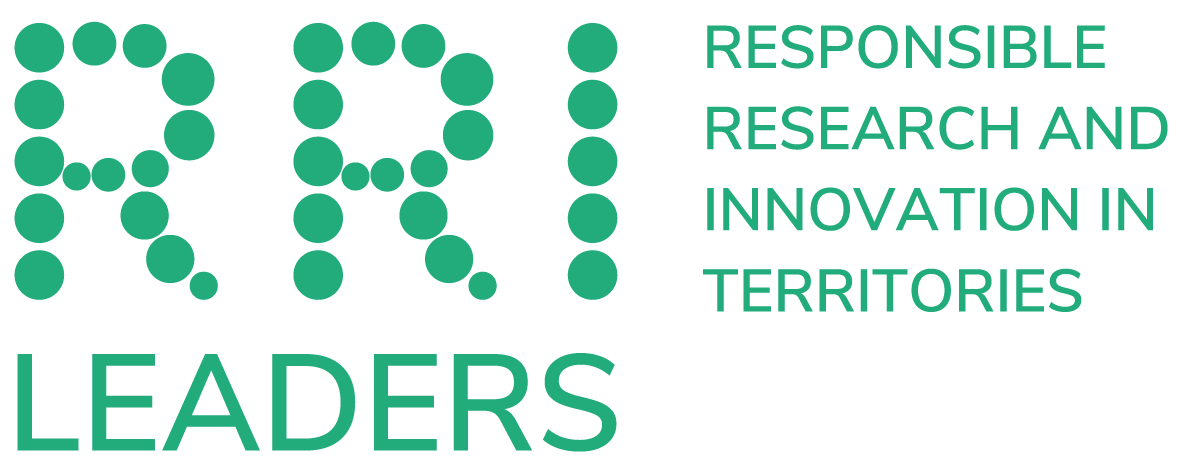Building the “Invisible City”

Urban development policies in the past several years have focused on transitions towards sustainability in areas like digital transformation, entrepreneurship, new skills, green innovation. Within the RRI-LEADERS project, Sofia had the opportunity to test new approaches to policy and territorial development, based on the RRI-AIRR framework. RRI-AIRR emphasizes the integration of societal needs and values in research and innovation, aiming to ensure that these initiatives align with societal expectations and contribute to the betterment of society. Territorial governance, on the other hand, deals with managing the dynamics of socioeconomic development at a regional level, encompassing the management of local resources, balancing diverse needs and interests in long-term perspective, and promoting territorial cohesion.
One example of creatively utilizing the RRI approach by the city administration is the implementation of Sofia’s Digital Transformation Strategy (DTSS). The RRI-AIRR framework is not nominally referred in the strategy although many of the values and principles underpinning the document de facto follow the framework’s logic. Deputy mayor Gencho Kerezov, who delivered a talk during the 3rd Policy Learning Workshop in Sofia, explains the pathways to success and the lessons learned from failure: taking risks and making bold decisions, inspiring with vision, and not giving up. Here’s a primer on building and running the “invisible city,” powered by digital technology.
Stakeholder collaboration and cross-department working
The DTSS is the result of Sofia’s participation in the Digital Cities Challenge (2018-2019), an initiative of the EC to help cities achieve sustainable economic growth through the use of high technology in all aspects of public life. In January 2020, the municipal council voted to create a new department for Digitalization, Innovation and Economic Development – InnovativeSofia, headed by а deputy mayor, to be in charge of the implementation of DTSS. Stakeholder and user engagement is a critical part of DTSS and includes “information exchange and communication; engagement, participation, collaboration, (co)-production; participatory decision-making; and open governance.” Key stakeholders relevant to the domains of the strategy cooperate through an open-membership (experts are invited ad hoc to contribute to specific topics) Digital Advisory Board, coordinated by InnovativeSofia.
Forward-looking policy sandboxing
To engage citizens and organizations in implementation, InnovativeSofia established the Sofia Sandbox for Innovative Solutions, a small grants program (which operates more like a venture capital fund) open to local start-ups and civil society to pilot innovative technological solutions related to urban challenges. It builds on the concept of a small wins strategy that encourages small-scale and bottom-up initiatives to address digital transition challenges in the city. It is a way to pursue the achievement of major strategy goals through shared responsibility with stakeholders and citizens, assuring that solutions have legitimacy and are accepted by the public. “The big advantage for businesses is that when you have Sofia, Europe’s 14th biggest city, as your client, and you have a positive reference for your project, this gives you a definite edge when you sit down to talks with investors, other city authorities and other clients. Some of the companies with which we implemented pilot projects now have very powerful B2C campaigns with the prototype of the solution and they are already selling it to private clients,” Kerezov explains. However, he also admits that it is very difficult for a start-up to get into the silo of the state administration. “Thankfully, we have the support of the business community and the start-up scene,” he adds.
Digital twins, clouds, and public sector innovation
Navigating complex regulatory frameworks and ensuring data privacy and security presents ongoing challenges, requiring continuous adaptation and collaboration with relevant stakeholders while turning the city into a testbed for experimentation. Sofia is working on an EU-funded project for developing common infrastructure that would allow for automation of administrative services. “We compiled a list of 50 e-services that we plan to automate entirely. This will cut considerably the time needed to provide these services to citizens and businesses, through a user-friendly mobile app,” Kerezov said. As part of the project, a fully automated electronic service for change of address was launched in 2022 for residents of the capital city.
Difficulties and barriers
The evolving digital innovation landscape and virtual re-creation of the city (Sofia’s digital twin) is a prime example of a virtual mode of urban governance. This new, uncharted territory redefines the process of public engagement, where citizens and stakeholders act as both producers and end-users of innovation, while the municipality is pushed to become an early adopter, validating the results of experimentation. At this point, the city administration is just beginning to operationalize RRI-AIRR in research and innovation processes; while various organizational practices and structures embed some keys and dimensions of the framework, the latter remains rather broad and implementing it will require a longer trial-and-error process on multiple levels in the city.
